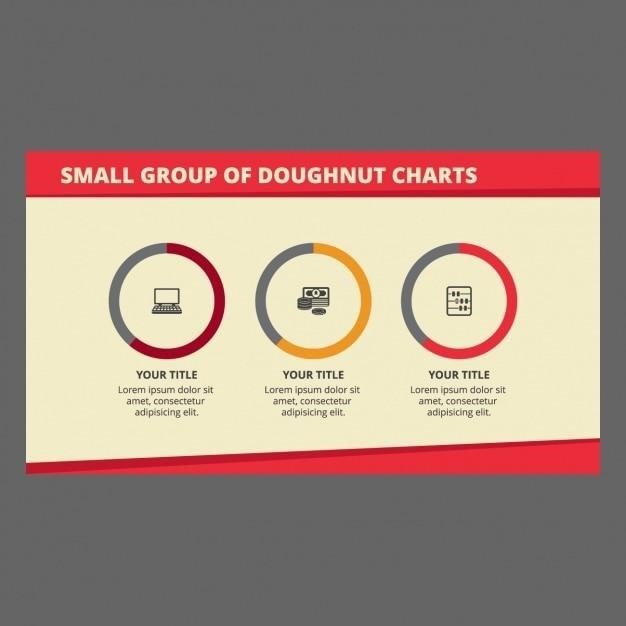Point de Mire Secondaire 4 CST⁚ A Comprehensive Guide
This guide provides a comprehensive overview of the Point de Mire Secondaire 4 CST textbook, covering its structure, key concepts, learning objectives, teaching strategies, assessment methods, and available resources. This guide aims to help educators and students navigate the textbook effectively, maximizing learning outcomes and achieving academic success.
Overview of Point de Mire Secondaire 4 CST
Point de Mire Secondaire 4 CST is an educational resource designed for students in the fourth year of secondary education in Quebec. It covers the curriculum for the Culture, Society, and Technology (CST) sequence, which explores the intersection of these disciplines in the context of contemporary society. This textbook provides a comprehensive and engaging approach to learning, addressing key concepts and skills essential for success in this subject.
The textbook is structured to align with the Quebec Ministry of Education’s (MEES) curriculum guidelines and the Progression of Learning (PDA), ensuring that students acquire the necessary knowledge and abilities. It is part of the Point de Mire series, which is renowned for its quality and effectiveness in supporting student learning. The Point de Mire Secondaire 4 CST textbook offers a balanced approach to theoretical knowledge and practical application, fostering a deep understanding of the subject matter.
The text is written in a clear and concise style, making it accessible to students with diverse learning styles. It incorporates a variety of pedagogical elements, such as illustrative examples, real-world applications, and engaging activities to stimulate critical thinking and problem-solving skills. These features make the textbook a valuable tool for educators and students seeking to enhance their understanding of the CST curriculum.
Content and Structure of the Textbook
The Point de Mire Secondaire 4 CST textbook is organized into seven chapters, each focusing on a specific theme within the Culture, Society, and Technology curriculum. The chapters are designed to be independent, allowing for flexibility in teaching and learning. Each chapter includes a comprehensive review section, summarizing key concepts and providing a foundation for the subsequent material.
The textbook incorporates a variety of pedagogical elements to enhance student engagement and understanding. Each section features a theoretical framework, providing a clear explanation of the concepts being explored. This is followed by a series of exercises and contextualized problems, allowing students to apply their knowledge in practical scenarios. Furthermore, two situation-problem sections (CD 1) are included in each chapter, providing opportunities for students to develop critical thinking and problem-solving skills in real-world contexts.
The textbook also features a concluding section summarizing the key takeaways of the chapter and highlighting important connections to the broader CST curriculum. This structure fosters a deeper understanding of the interconnectedness of the subject matter and encourages students to synthesize their learning throughout the course.
Key Concepts Covered in the Textbook
The Point de Mire Secondaire 4 CST textbook covers a wide range of key concepts essential for understanding the relationship between culture, society, and technology. It delves into the historical development of technology and its impact on various aspects of society, exploring themes such as globalization, environmental sustainability, and social justice. The textbook also examines the role of technology in shaping our understanding of the world and its influence on our values, beliefs, and behaviors.
Specific concepts explored include the evolution of communication technologies, the impact of automation on the workforce, the ethical considerations surrounding artificial intelligence, the challenges of cybersecurity, and the role of technology in addressing global issues such as climate change. The textbook also examines the influence of social media on public discourse and the implications of data privacy in the digital age.
By exploring these key concepts, the Point de Mire Secondaire 4 CST textbook provides students with a critical understanding of the complex interplay between technology, society, and culture, equipping them with the knowledge and skills needed to navigate the rapidly evolving technological landscape.
Learning Objectives and Outcomes
The Point de Mire Secondaire 4 CST textbook is designed to equip students with a comprehensive understanding of the multifaceted relationship between culture, society, and technology. Through its exploration of key concepts and real-world examples, the textbook aims to achieve a range of learning objectives and outcomes.
Upon completion of the course, students will be able to⁚
- Analyze the historical development of technology and its impact on various aspects of society.
- Critically evaluate the social, ethical, and environmental implications of technological advancements.
- Understand the role of technology in shaping global issues and solutions, including climate change, globalization, and social justice.
- Develop critical thinking skills to navigate the complex and ever-evolving technological landscape.
- Communicate effectively about technology and its impact on society, demonstrating a clear understanding of key concepts and terminology.
- Apply their knowledge to real-world scenarios, fostering a sense of responsibility and informed decision-making in a technologically driven world.
By achieving these learning objectives, students will gain a solid foundation for understanding the intricate connections between technology, society, and culture, preparing them to engage effectively with the challenges and opportunities presented by the digital age.
Teaching Strategies and Activities
The Point de Mire Secondaire 4 CST textbook offers a range of teaching strategies and activities designed to engage students and promote deep learning. The textbook encourages educators to utilize a variety of pedagogical approaches, fostering active participation, critical thinking, and collaborative learning.
Here are some suggested strategies and activities⁚
- Interactive Discussions⁚ Encourage students to engage in discussions about the social, ethical, and environmental implications of technology. This can be facilitated through group work, debates, and online forums.
- Case Studies and Real-World Examples⁚ Use real-world examples and case studies to illustrate key concepts and connect theoretical knowledge to practical applications. Students can research and present their findings to the class.
- Technology Integration⁚ Utilize technology in the classroom, incorporating online resources, simulations, and multimedia presentations. This can enhance student engagement and provide access to a wider range of information and perspectives.
- Project-Based Learning⁚ Encourage students to develop projects that address specific issues related to technology and society. This could involve designing a website, creating a documentary, or developing a solution to a real-world problem.
- Guest Speakers and Field Trips⁚ Invite professionals working in fields related to technology and society to share their experiences and insights. Organize field trips to technology companies, museums, or research centers to expose students to real-world applications of technology.
By implementing these strategies and activities, educators can create a dynamic and engaging learning environment that fosters critical thinking, problem-solving, and a deeper understanding of the complex relationship between technology, society, and culture.
Assessment and Evaluation
The Point de Mire Secondaire 4 CST textbook provides a comprehensive framework for assessing student learning and evaluating their understanding of the course content. It emphasizes a variety of assessment methods, catering to different learning styles and ensuring a holistic evaluation of student progress.
The textbook suggests the following assessment strategies⁚
- Formative Assessment⁚ Ongoing assessment throughout the course, using quizzes, class participation, and informal observations, provides valuable feedback to both students and teachers. This allows for adjustments in teaching strategies and student learning approaches.
- Summative Assessment⁚ End-of-unit tests, projects, and presentations provide a comprehensive evaluation of student learning. These assessments should be aligned with the learning objectives outlined in the textbook.
- Performance-Based Assessment⁚ Tasks that require students to apply their knowledge and skills in real-world contexts, such as designing a website, conducting a research project, or developing a presentation, offer a more authentic assessment of their abilities.
- Self-Assessment⁚ Encourage students to reflect on their own learning and identify areas for improvement. This can be facilitated through reflective journals, portfolios, and peer evaluations.
The Point de Mire Secondaire 4 CST textbook emphasizes the importance of providing constructive feedback to students, helping them identify strengths and areas for growth. The assessment framework aims to create a learning environment that encourages continuous improvement and fosters a deep understanding of the complex relationship between technology, society, and culture.
Resources and Support Materials
The Point de Mire Secondaire 4 CST textbook is designed to be a comprehensive resource for students and teachers, offering a range of support materials to enhance learning and facilitate understanding. These resources are strategically integrated throughout the textbook, providing valuable tools for both independent study and classroom activities.

Key support materials include⁚
- Interactive Exercises⁚ The textbook features a variety of interactive exercises designed to engage students and provide immediate feedback on their understanding. These exercises cover a wide range of concepts, from basic definitions to complex problem-solving, ensuring a dynamic learning experience.
- Case Studies⁚ Real-world case studies provide students with practical applications of the theoretical concepts presented in the textbook. These case studies encourage critical thinking and promote a deeper understanding of the relationship between technology, society, and culture.
- Web Resources⁚ The textbook includes links to relevant websites, providing students with access to additional information, research materials, and interactive tools. These resources encourage further exploration and expand upon the concepts covered in the textbook.
- Teacher’s Guide⁚ The accompanying teacher’s guide offers valuable support for educators, including lesson plans, assessment tools, and answer keys. This comprehensive resource provides teachers with the tools they need to effectively implement the textbook and tailor instruction to meet the needs of their students.
The Point de Mire Secondaire 4 CST textbook emphasizes the importance of diverse learning resources, empowering students to explore topics in depth and develop a comprehensive understanding of the course content. The textbook’s commitment to providing comprehensive support materials fosters a dynamic learning environment that caters to individual learning styles and promotes academic success.
The Point de Mire Secondaire 4 CST textbook stands as a valuable resource for students and educators seeking to explore the intricate relationship between culture, society, and technology. Its comprehensive coverage of key concepts, coupled with engaging learning activities and extensive support materials, fosters a dynamic learning environment that encourages critical thinking, problem-solving, and a deeper understanding of the world around us.
The textbook’s focus on real-world applications, interactive exercises, and diverse resources ensures a relevant and engaging learning experience. The inclusion of case studies and web resources provides students with practical examples and opportunities to explore topics further, deepening their understanding and fostering a sense of intellectual curiosity.
By providing educators with a comprehensive teacher’s guide, the textbook empowers them to effectively implement the curriculum and cater to individual learning styles. The textbook’s commitment to accessibility and inclusivity ensures that all students have the opportunity to engage with the material and achieve academic success.
In conclusion, the Point de Mire Secondaire 4 CST textbook serves as a valuable resource for students and educators seeking to delve into the complexities of technology and its impact on society. Its comprehensive approach, engaging activities, and extensive support materials make it an indispensable tool for fostering critical thinking, promoting deeper understanding, and preparing students for the challenges and opportunities of the 21st century.
